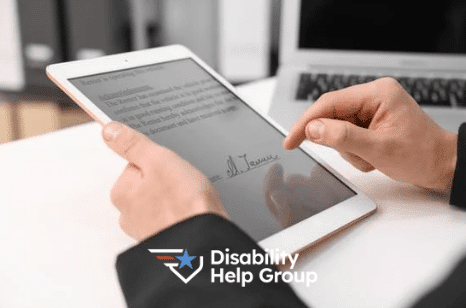Can I Get SSDI If I Am 60 Years Old?
You can get disability benefits up until full retirement age. Currently, the full retirement age is 67 years old. Generally, winning a disability claim gets easier for people as they get older.
SSDI vs. Early Retirement
You can file for early retirement benefits once you turn 62. However, collecting early retirement rather than filing for SSDI has some drawbacks. If you take early retirement, your benefit amount will be permanently reduced. The amount Social Security reduces your benefit depends on the number of months you have until you reach full retirement age. If you apply and get approved for SSDI, you will receive 100% of your monthly benefit. That benefit continues when it switches over to Social Security when you reach full retirement age.
Filing for SSDI at 60 years old
SSDI benefits can be time-consuming and challenging. However, if you have the proper documentation to support your claim, you can win your claim. SSDI requires that your medical conditions prevent you from working. Additionally, you must be incapable of working for at least 12 months. Luckily, Social Security can make it easier to receive SSDI when they are close to retirement age. Below are some key takeaways to understanding how to secure SSDI early at 60 years old.
Medical evidence
Social Security has to figure out how your conditions interfere with your daily activities. They do this by reviewing your medical records. Therefore, you need to see your doctors regularly for your conditions. Additionally, you should be in treatment with specialists. Frequently, records kept by specialists document your symptoms and problems better than your general doctor. Your doctors can also help your claim by completing a form explaining how your conditions impact your functioning, known as an RFC form.
Grid Rules
Social Security considers several factors to decide if a person qualifies for SSDI. These factors include a person’s age, education, residual functional capacity (RFC), and their work history. Your RFC includes what you can do despite your medical conditions. Once Social Security figures out your RFC, they consider the grid rules.
Once Social Security figures out your RFC and your past work, they will look to the grid rules. The grid rules allow Social Security to approve your SSDI claim even if you can do other work. Social Security has separate charts for different physical categories. Specifically, they include sedentary, light, and medium physical categories.
Your Past Work and Job Skills
In order to apply the grid rules, Social Security must categorize your past work. The grid rules only apply if you can’t return to any of your past work. Social Security only considers past relevant work. Past relevant work includes work you’ve done within the past 15 years. Additionally, it should have resulted in significant earnings. Temporary or part-time jobs might not count as past relevant work. Your past work gets classified under one of the physical categories.
Social Security looks at the type of skills required to do your past work. Social Security considers whether any skills you learned at your previous jobs could be used to do something else. If you do, Social Security considers them “transferable skills”. Generally, people who performed semi-skilled or skilled jobs will have developed skills they could use doing something else. This can make it harder to apply the grid rules. However, at age 60, there must be little to no additional training or adjustment. Some jobs require such specialized skills, and Social Security will decide that the worker doesn’t have transferable skills.
Your RFC
Your RFC can include both mental and physical limitations. Social Security evaluates your ability to perform activities required for you to work. You must show that your medical conditions interfere with your daily activities. Social Security reviews your medical records to figure out your RFC.
Below are some examples of how the SSA may determine eligibility for SSDI benefits:
Example 1: Applying the grid rules at 60
Julia, a 61-year-old woman, applied for SSDI due to coronary artery disease and high blood pressure. She also suffers from depression. Julia previously worked as a cook. Her job required her to lift and carry up to 50 pounds at times. Social Security found that she could not perform her job as a cook. She had no transferable skills. Social Security awarded Julia disability benefits.
Example 2: Applying the grid rules at 60
Frank, a 60-year-old man, applied for SSDI due to a right shoulder injury. He previously worked as a janitor. He also had past work as a construction worker. Frank has difficulty lifting and carrying heavy items with his right arm. In fact, he can’t pick up more than 15 pounds. Social Security found that Frank could perform light work. Frank has no transferable skills. Therefore, Social Security approved Frank’s SSDI claim.
Example 3: Disability Help Group Case Study
For example, Matthew applied for SSDI because he had arthritis in his knees. He was 62 years old and worked as a fork-lift operator in a warehouse for many years. Matthew had only visited his primary care doctor. His doctor gave him a referral to physical therapy. Unfortunately, Matthew as denied for SSDI. He then contacted Disability Help Group for help with his appeal. Our advocate suggested that he get x-rays and imaging of his knees. She also suggested that he get a prescription for the cane he used. Matthew followed his advocate’s advice. On appeal, Matthew’s additional medical evidence helped show that he could not return to his job as a fork-lift operator. Therefore, Social Security applied the grid rules and approved his case.
SSDI Timing and Approval FAQs
One of the biggest concerns people have when applying for Social Security Disability Insurance (SSDI) at age 60 is how long the process will take and what to expect along the way. The timeline can vary from person to person, but understanding the steps and factors that affect approval can help you plan and avoid unnecessary delays. Below are answers to some of the most common timing-related questions about getting SSDI in your 60s.
• How long does it usually take to get an SSDI decision?
Most initial SSDI claims take about 3 to 6 months to process, but the exact time frame depends on how quickly Social Security can gather and review your medical evidence. If your records are complete and you respond quickly to any requests for information, your decision may come sooner.
• What happens if my claim is denied?
Many initial SSDI applications are denied, but that doesn’t mean the process is over. If you appeal, your case will go through additional review, which can take several more months or over a year. Having strong medical evidence and working with an experienced disability advocate can improve your chances and help keep the process moving as quickly as possible.
Call Now for a Free Case Review, 800-800-3332
Our team is here to help you through every step of you disablity journey. Make sure you start your SSDI claim the right way and apply for all the benefits you deserve. Contact us now for a free consultation.







